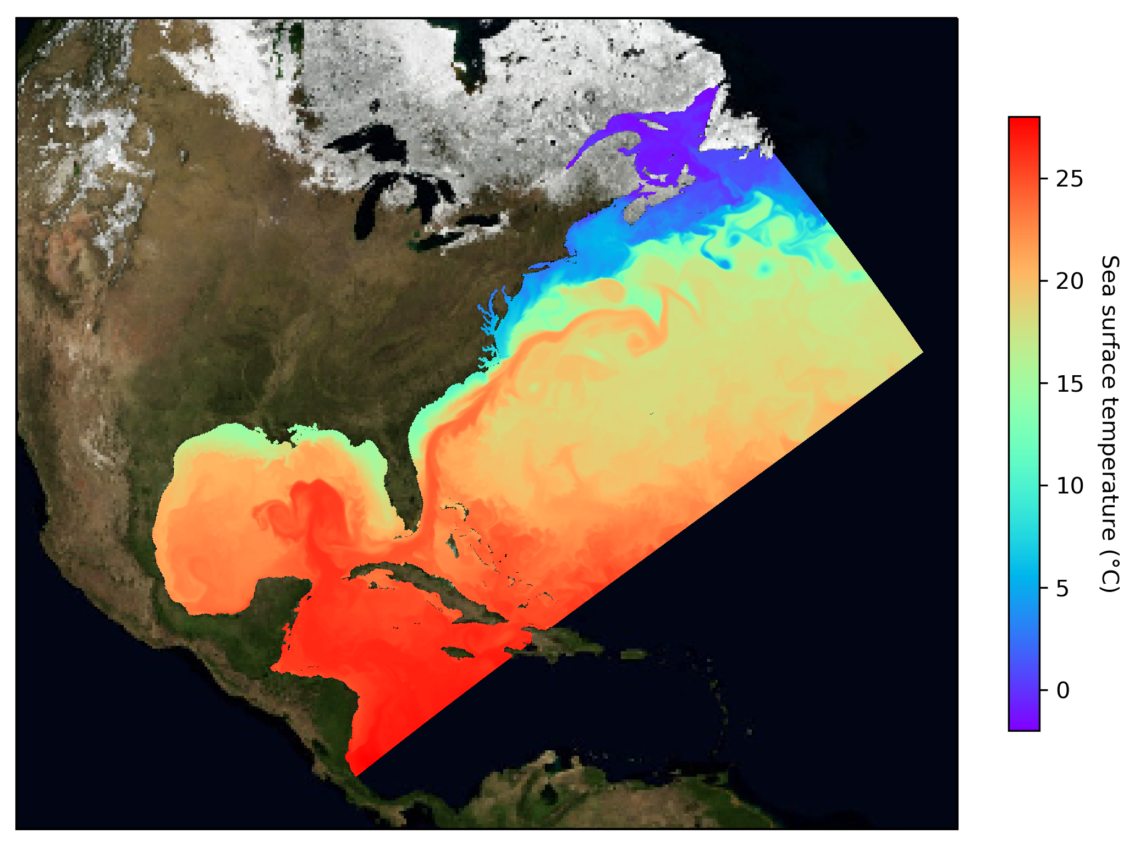Improving Ocean Habitat Forecasts for the Northeast U.S.

Charles Stock, research oceanographer at GFDL, and Andrew Ross, Princeton University associate research scholar, are lead investigators of a new initiative to improve seasonal to interannual ocean habitat forecasts for the Northeast U.S. Many fisheries management decisions are made weeks to months in advance. Therefore, providing skillful climate and ocean forecasts may improve both fisheries yields and sustainability.
Although modern global climate forecast systems can skillfully forecast sea surface temperature and other relevant variables for many parts of the world, forecast systems are less skillful in the Northeast United States Large Marine Ecosystem (NEUS-LME). It is hypothesized that higher resolution models capable of resolving the propagation of ocean-basin scale climate variations to the NEUS shelf can improve forecast skill.
For this project, Dr. Stock and Dr. Ross, along with co-investigators Alistair Adcroft, Vincent Saba, and Enrique Curchitser, and collaborators Mike Alexander and Keith Dixon, will use the new regional modeling capacity built into GFDL’s Modular Ocean Model 6 (MOM6) to calibrate and evaluate a regional ocean model that includes the NEUS and the broader Northwest Atlantic Ocean (see Figure). This model will be used to downscale seasonal to interannual forecasts from NOAA’s global climate prediction systems and to assess whether the higher resolution model improves the forecast skill.
After developing forecasts for temperature, salinity, and currents using MOM6, researchers will develop a set of biogeochemical forecasts to analyze how the mechanisms underlying the physical prediction skill translate to predictable patterns of acidification, chlorophyll, primary production, and oxygen.
This project is being funded by NOAA’s Climate Program Office.


